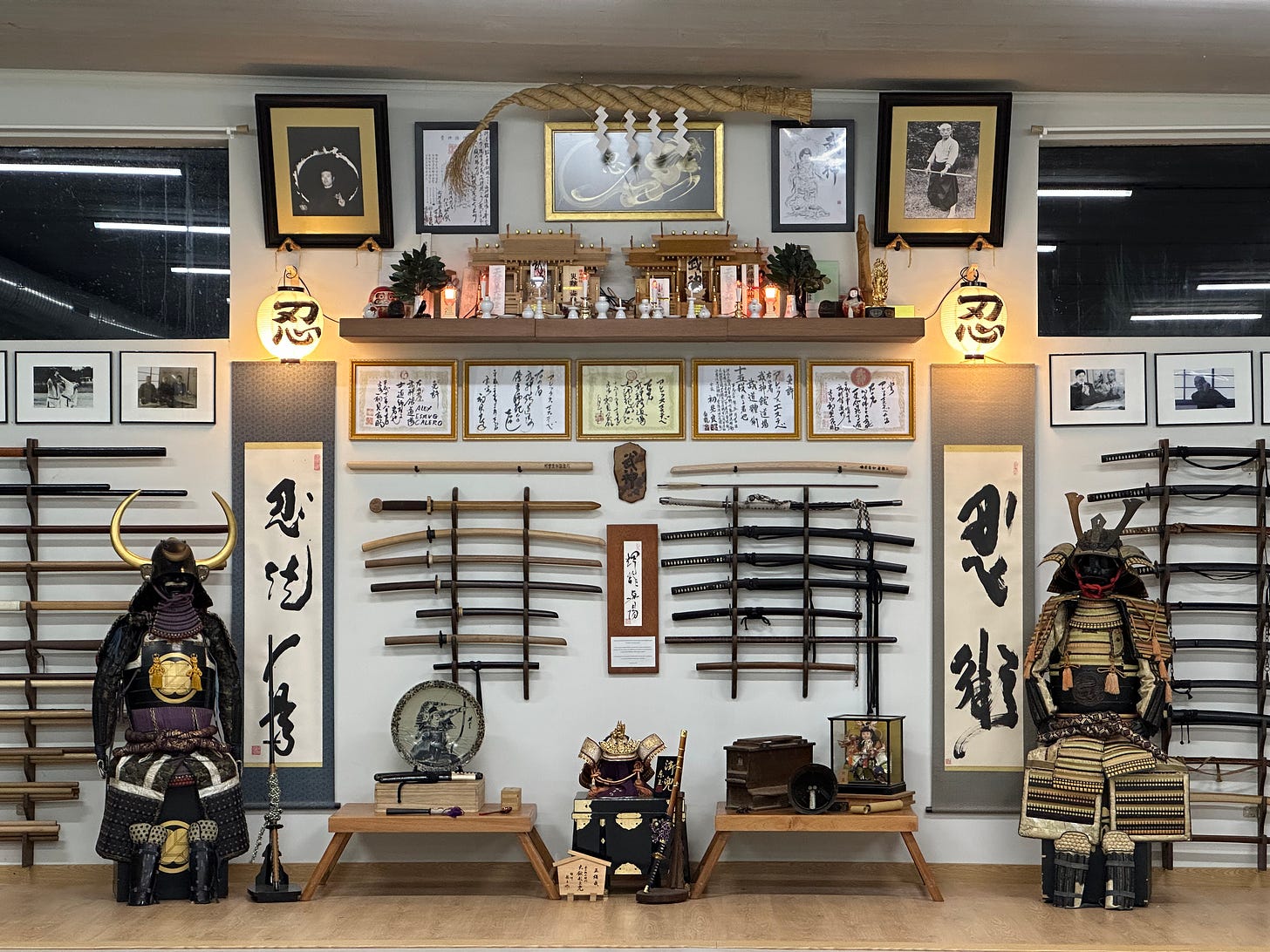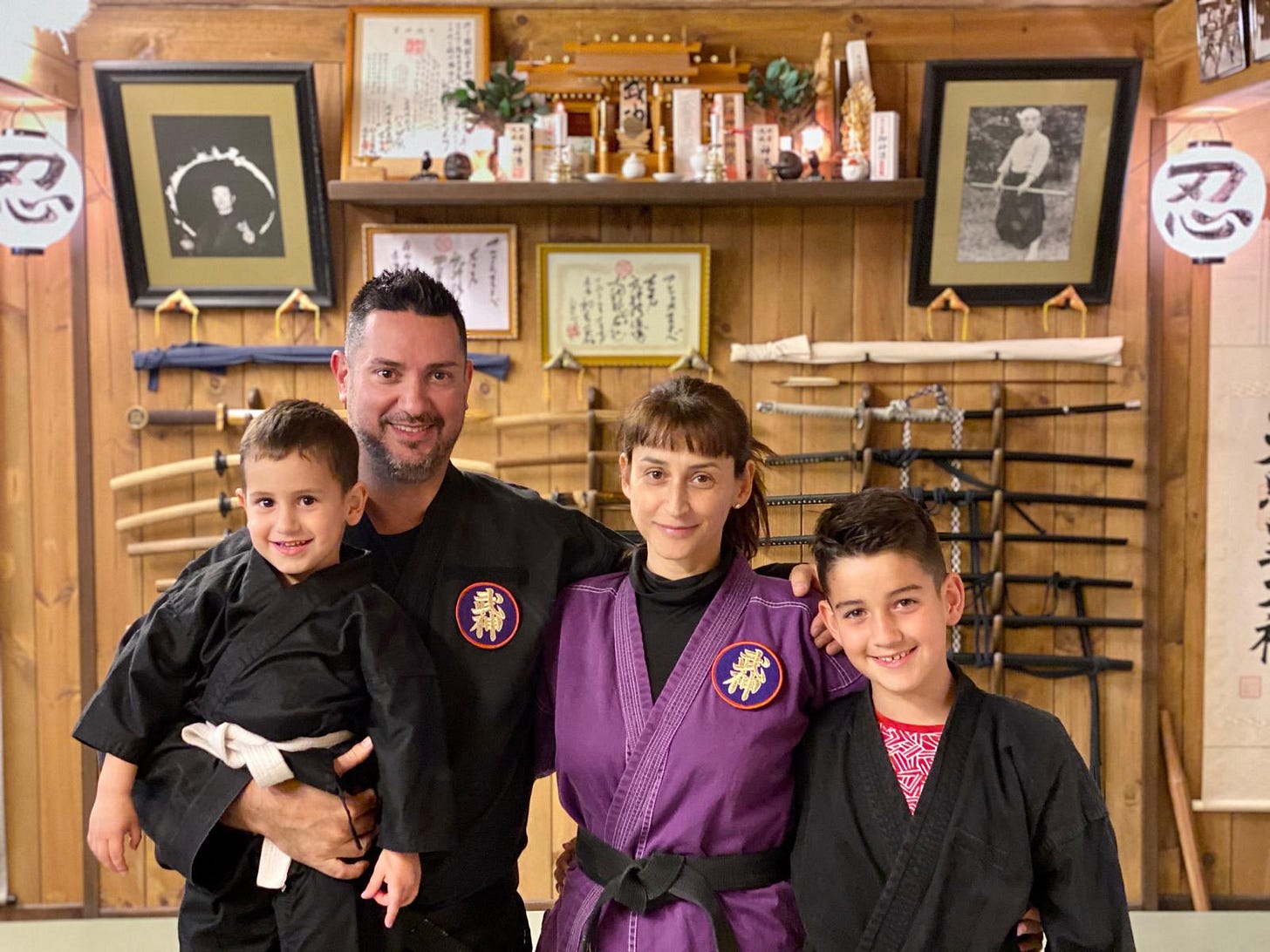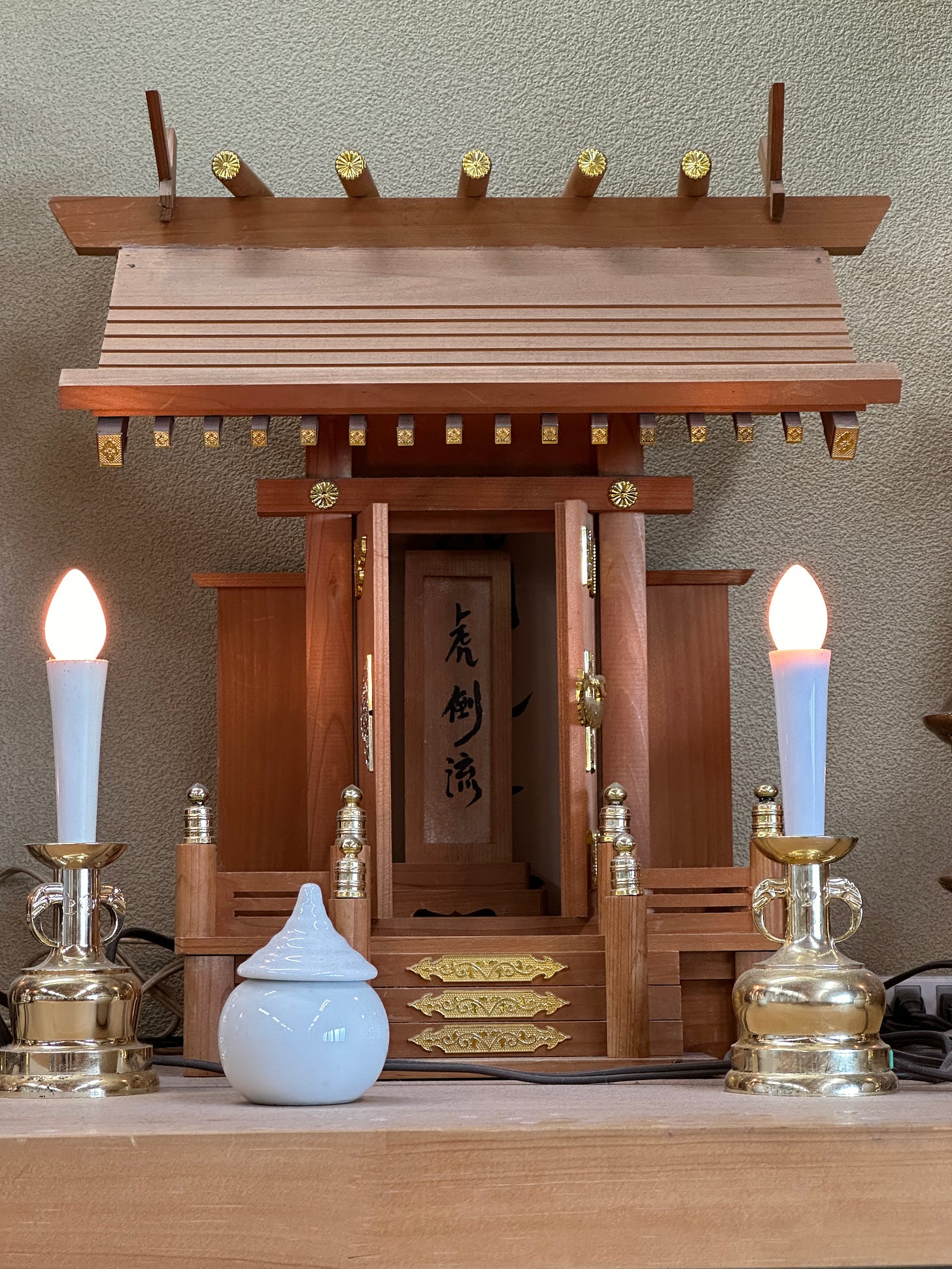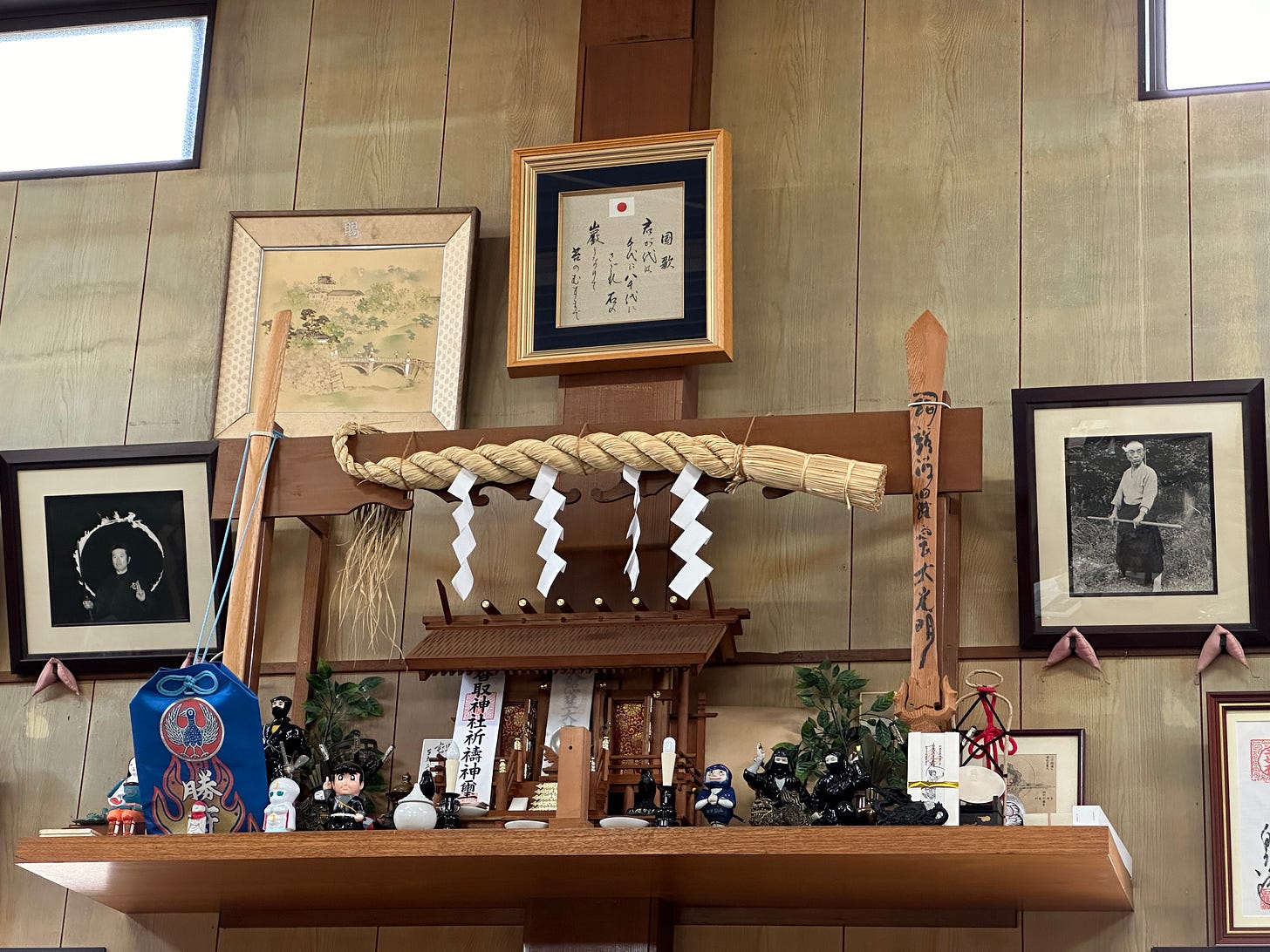In Japanese tradition, the Dōjō (道場) is much more than a physical space where disciplines are practiced. Its true meaning goes beyond the simple concept of a training area. The word "Dōjō" is made up of two deeply significant kanji: 道 (Dō), meaning "path" or "way," and 場 (Jō), meaning "place." Thus, a Dōjō is literally the "place of the way," a sacred space where the body, mind, and spirit are holistically developed through the practice of martial arts.
Bujin Kiryu Dojo in Campllong, Girona, Spain.
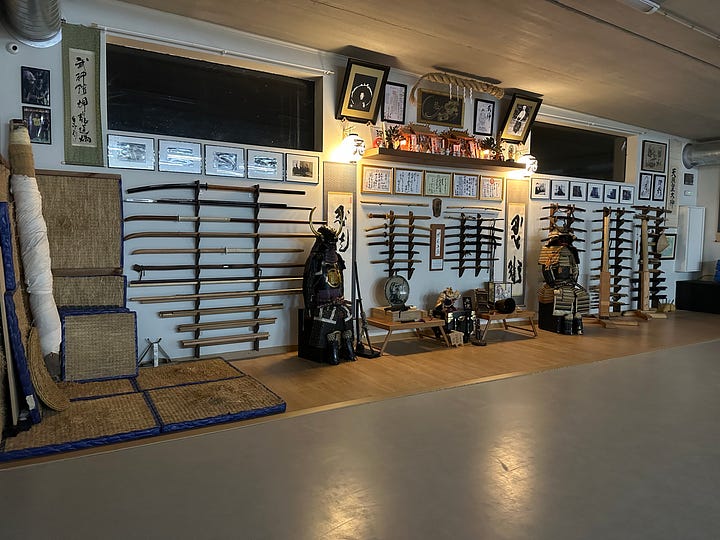
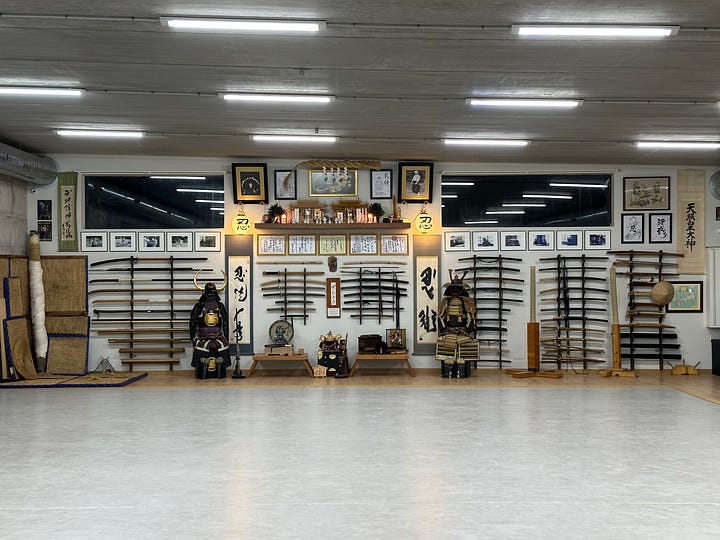
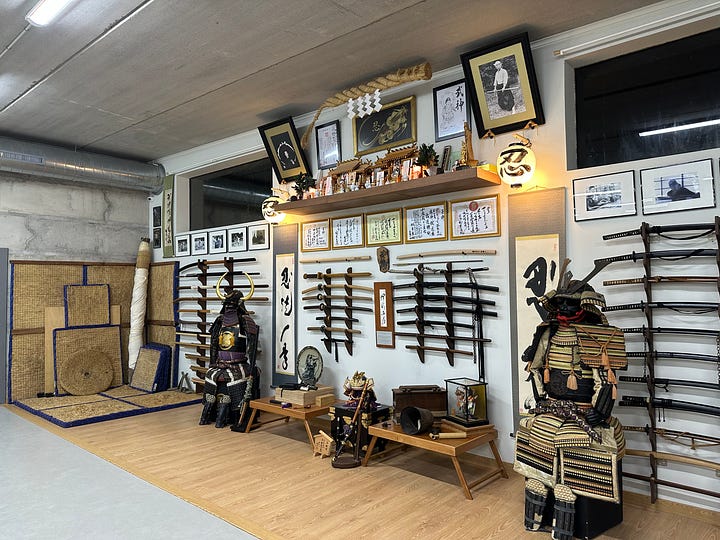
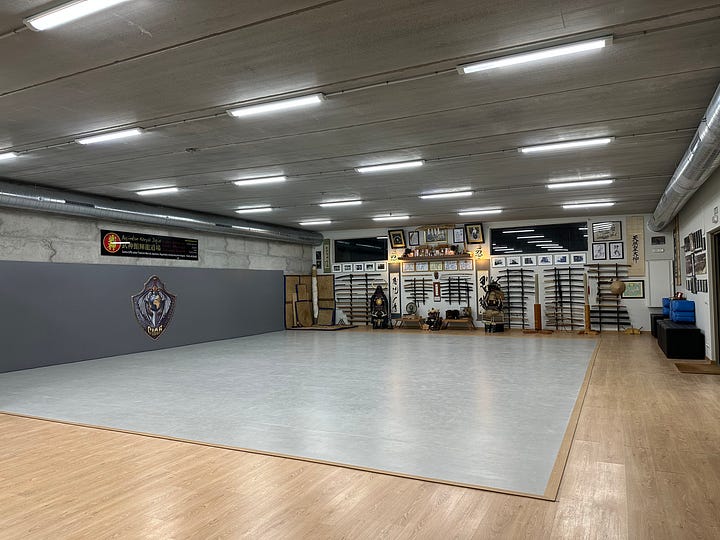
The Depth of the Kanji: 道場
The kanji 道 (Dō) has a history and meaning that extend far beyond martial arts. In Taoist philosophy, Dō refers to the "way" or "tao," which represents the essential nature of the universe, the force that underlies and guides all things. In the Dōjō, this "way" represents both the physical and technical journey of the student as well as their spiritual and ethical development. The practitioner learns not only combat techniques but also how to understand and respect the natural flow of life, relationships, and the fundamental principles governing the art they study.
Meanwhile, 場 (Jō) means "place" or "space," but not in the common sense of a room or physical area. This kanji carries the connotation of a dedicated, purposeful space, a place of focus and transformation. In the context of a Dōjō, it refers to a consecrated space designed not just for training the body but for nourishing the spirit and mind. The Dōjō is a place where martial arts come to life, but also where values, discipline, and humility are forged day after day.
The Dōjō: A Sacred Place for Holistic Transformation
The Dōjō is, therefore, a sacred place where the integrity of the human being—body, mind, and spirit—is cultivated. Through daily practice, the physical discipline of training sharpens the body, strengthens the will, and calms the mind. This balance of the three aspects of the self is fundamental in traditional Japanese martial arts.
Body (Shintai 身体): The body is the vehicle through which the warrior develops their skills. In the Dōjō, every technique and kata is not only about perfecting movements but also understanding efficiency and gaining total control over the body. Constant repetition and rigorous practice build strength, endurance, and flexibility, embodying the principle of tanren (鍛錬), or "forging."
Mind (Shin 心): The mind is cultivated through both concentration and reflection. As martial techniques are learned, the practitioner also trains focus and mental clarity. Traditional Japanese martial arts aim to develop a serene and centered mind, capable of making quick, effective decisions even under stress. This is the concept of mushin (無心), or "no mind," where thoughts do not distract from proper action.
Spirit (Rei 礼): The spirit in the Dōjō is deeply connected to respect and reverence. Every practice session begins and ends with a demonstration of respect, whether toward the teacher, fellow students, or the Dōjō itself. This reverence, known as rei, is fundamental in developing humility and gratitude. In this sense, the Dōjō is also a place where character is nurtured, where the warrior learns not just to be strong but also to be humble and compassionate.
Historical Origins of the Dōjō: From the Warrior Class to the Public
The earliest Dōjō in Japan were private spaces used by the warrior class, the samurai, to train and refine their martial skills. These first Dōjō were exclusive to warrior clans, closed to the public, and dedicated to transmitting secret techniques and knowledge essential for survival and success on the battlefield.
However, with the arrival of the Edo period (1603-1868) and the pacification of the country, a significant change occurred. The machi no Dōjō (町の道場), or "city Dōjō," began opening to people outside the warrior class. For the first time, merchants, farmers, and other common citizens were granted access to martial arts training. These Dōjō not only offered martial techniques but also provided a space for personal and communal development. Martial training was no longer confined to war preparation but became a path to inner harmony and mutual respect.
In traditional Japanese martial arts Dōjō, it is common to find a kamidana (神棚), a small Shinto altar dedicated to protective deities and spirits. This altar symbolizes deep respect for tradition and a direct connection to ancestral energies that guide and support practitioners on their martial path.
The kamidana is made up of offerings and sacred symbols representing kami (deities and spirits) and ancestors. In the Dōjō, the kamidana is where reverence is shown not only to past masters but also to cosmic forces that protect and purify the space. Before and after training, a ritual of respect is often performed toward the kamidana, helping to center the mind, purify the spirit, and connect the practitioner with the spiritual principles and satori (enlightenment) that martial arts strive to achieve.
Thus, this altar represents not just a physical tradition but also a spiritual bond with the past, reminding practitioners that the Dōjō is a place where both the body and a deep connection with the energies sustaining and guiding practice are cultivated.
Key Differences Between a Dōjō and a Gym
At first glance, a Dōjō may seem similar to a modern gym, as both are places dedicated to physical exercise. However, the difference between the two is profound and fundamental.
Spiritual and Ethical Purpose: While a gym focuses on body development and physical fitness, a Dōjō has a much deeper purpose. Every action in the Dōjō is imbued with spiritual and ethical values. The practice is not just for physical benefit but for the integral growth of the individual as a human being. The Dōjō is a place where respect, discipline, self-control, and humility—virtues essential to a true warrior—are cultivated.
The Dōjō as Sacred Space: The Dōjō is not simply a training space but a sacred place that honors ancestral tradition. At the entrance of a traditional Dōjō, you will often find a kamiza (神座), an altar or space dedicated to ancestors and protective spirits of the martial art. This spiritual connection reinforces the idea that the Dōjō is a place of transformation, where something beyond mere physical strength is nurtured.
Master-Disciple Relationship: In a Dōjō, the relationship between the master (sensei) and the disciple is fundamental. The master not only teaches techniques but also acts as a spiritual guide and mentor on the martial path. This relationship, known as shu-ha-ri (守破離), implies a constant evolution, where the disciple first imitates, then adapts, and finally transcends the master’s teachings. This dimension is absent in a gym, where the focus tends to be more individualistic and oriented toward immediate results.
The Dōjō is a sacred and profound place, where the body, mind, and spirit are integrated into a journey of self-discovery and growth. From its origins as exclusive spaces for warriors to the opening of machi no Dōjō for the public, the Dōjō has maintained its essence as a place dedicated to cultivating virtue and martial mastery. Unlike a gym, where the goal is purely physical, the Dōjō offers a holistic experience where spiritual and ethical development is as important as physical strength. It is a space where tradition, discipline, and respect converge to guide the practitioner toward inner harmony and enlightenment.


